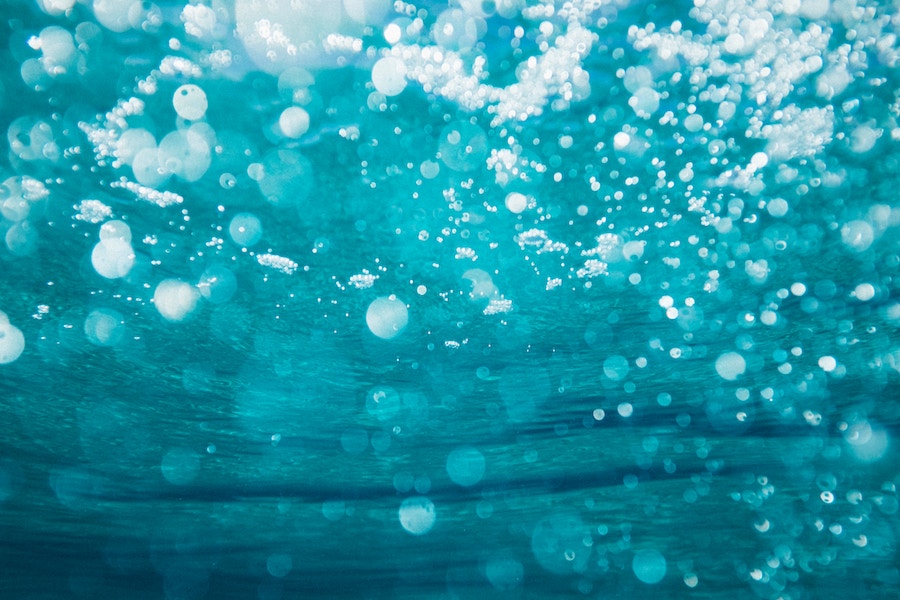Here are 2 water treatment math practice problems. They’re questions on chemical dosing calculations for water treatment. As always, I included the solutions for the problems at the bottom of the page.
I encourage you to solve them without looking at the solutions. If you have no idea how to solve them, carefully review the solutions, step by step. Also, you can enroll in this online water math course, which will help you improve your math skills.
Water Treatment Math Practice Problems – Chemical Dosing Calculations
PRACTICE PROBLEMS:
- How many pounds/day of chlorine gas are required to disinfect a water supply flowing at a rate of 1 MGD, if the desired chlorine dose is 2 mg/L?
2. How many pounds/day of 65% calcium hypochlorite are required to disinfect the same water supply, flowing at a rate of 1 MGD, with a desired chlorine dose of 2 mg/L?
ANSWER FOR PRACTICE PROBLEM # 1:
Step 1: LIST ALL THE DATA GIVEN
KNOWN
Flowrate = 1 MGD
Chlorine dose = 2 mg/L
UNKNOWN
lbs/day of chlorine gas required = ?
Step 2: CALCULATE LBS/DAY OF CHLORINE GAS REQUIRED
lbs / day = (Flowrate, MGD) x (Dose, mg/L) x (8.34 lbs/gallon)
♦First, enter the flowrate in MGD, and chlorine dose in mg/L.
lbs / day = (1 MGD) x (2 mg/L) x (8.34 lbs/gallon)
= 16.68 lbs/day of chlorine gas required
♦To sum up, this is the lbs/day of chlorine gas required to disinfect the water supply. Moreover, note that chlorine gas is 100% pure chlorine.
♦Next, we’re going to solve a similar water treatment practice problem. However, it involves a different type of disinfectant: 65% calcium hypochlorite, which has a strength equal to 65% of chlorine gas. In short, 65% calcium hypochlorite is weaker than chlorine gas. As you’ll see, it requires one extra step to solve.
ANSWER FOR PRACTICE PROBLEM # 2:
Step 1: LIST ALL THE DATA GIVEN
KNOWN
Flowrate = 1 MGD
Chlorine dose = 2 mg/L
UNKNOWN
lbs/day of 65% calcium hypochlorite required = ?
Step 2: CALCULATE LBS/DAY OF PURE CHLORINE REQUIRED
lbs / day = (Flowrate, MGD) x (Dose, mg/L) x (8.34 lbs/gallon)
♦First, enter the flowrate in MGD, and chlorine dose in mg/L.
lbs / day = (1 MGD) x (2 mg/L) x (8.34 lbs/gallon)
= 16.68 lbs/day of pure chlorine
♦This is the lbs/day of pure chlorine required.
♦However, we’re not using pure chlorine to disinfect the water. Instead, we’re using 65% calcium hypochlorite, which is weaker than pure chlorine. As mentioned previously, the strength of 65% calcium hypochlorite is only 65% of pure chlorine.
♦ Therefore, in STEP 3, we have to convert lbs/day of pure chlorine from STEP 2 to lbs/day of 65% calcium hypochlorite.
Step 3: CALCULATE LBS/DAY OF 65% CALCIUM HYPOCHLORITE REQUIRED
♦Since the strength of 65% calcium hypochlorite is only 65% of pure chlorine, we have to divide the lbs/day of pure chlorine from STEP 2 by .65, which is the decimal format of 65%.
♦Therefore, use “16.68 lbs/day of pure chlorine” from STEP 2, and divide it by .65. Consequently, this will give us the lbs/day of 65% calcium hypochlorite required.
Answer = 25.66 lbs/day of 65% calcium hypochlorite
CONCLUSION
In conclusion, chemical dosing calculations are very common on water treatment operator certification tests. Therefore, make sure to solve many of these water treatment math practice problems before your test.
To summarize, remember that chlorine gas is 100% pure chlorine. Furthermore, 65% calcium hypochlorite has a strength equal to 65% of pure chlorine (chlorine gas). Similarly, 12.5% sodium hypochlorite has a strength that is only 12.5% of pure chlorine (chlorine gas).
If water treatment math is your biggest weakness, try to solve as many practice problems as possible. Typically, you’ll see similar water treatment math questions on every operator certification test. Thus, if you constantly solve relevant water treatment math practice problems, you’ll be better prepared for the test.
Lastly, don’t just solve one or two practice problems. You have to solve a lot of them.
HELPFUL RESOURCES:
Water Treatment Math Practice Problems
Incidentally, if you’re looking for more water treatment math practice problems, click here. This link will take you to a chemical dosing practice question that is a bit more challenging.


